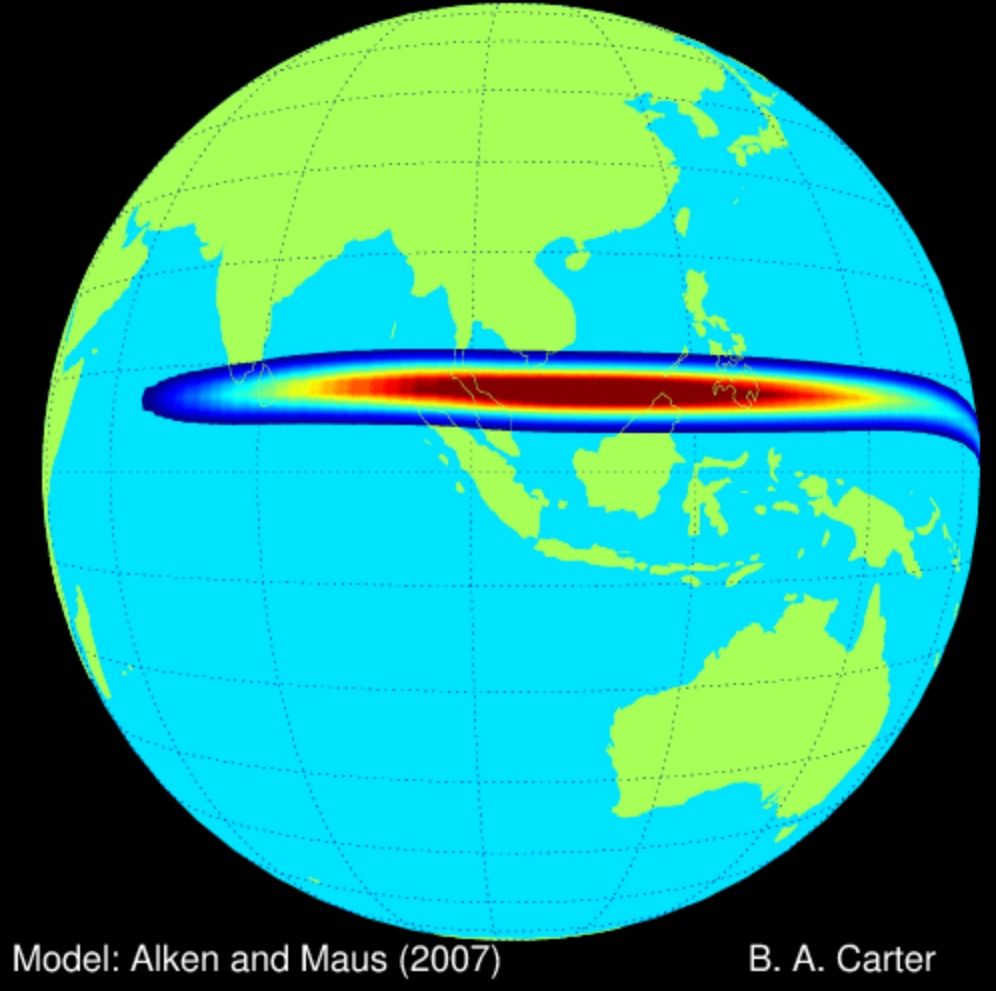Jet of Electric Current Boosts Space Weather at Equator

Solar explosions can threaten power grids even in areas near the equator, places long thought safe from such disruptions from the sun, say researchers who studied a weird flow of electricity pulsing above the equatorial regions.
Solar eruptions can blast Earth with super-heated electrically charged particles. When these explosions slam into Earth's magnetosphere— the shroud of electrically charged particles around Earth held together by the planet's magnetic field — they can trigger disturbances known as geomagnetic storms.
Geomagnetic storms can generate geomagnetically induced currents — electrical currents in power lines, telecommunications cables, oil and gas pipelines, and other long wires that can damage power grids. For example, in 1989, an extreme geomagnetic storm blacked out the Canadian province of Quebec in about 90 seconds, leaving 6 million customers in the dark for nine hours, damaging transformers as far away as New Jersey, and nearly taking down U.S. power grids from the Eastern Seaboard to the Pacific Northwest. [Sun Storms: Incredible Photos of Solar Flares]
The impacts of geomagnetic storms are strongest at high latitudes near the poles. As such, there was previously little concern that solar activity could lead to blackouts in lower latitudes near the equator.
Now, scientists find that so-called interplanetary shocks — gusts of solar wind — can trigger damaging geomagnetically induced currents even in equatorial regions.
Interplanetary shocks accompany high solar activity, just as extreme geomagnetic storms do. However, interplanetary shocks can strike even during what researchers might otherwise classify as quiet periods of space weather. "Shocks that are not associated with geomagnetic storms tend to occur a few to several times per year," said study lead author Brett Carter, a space physicist at Boston College's Institute for Scientific Research and at the Royal Melbourne Institute of Technology in Melbourne.
The researchers analyzed 14 years of geomagnetic data collected in space and on Earth by NASA and Intermagnet, a global network of observatories monitoring the Earth's magnetic field. They focused on the equatorial electrojet, a naturally occurring flow of electric current found about 60 miles (100 kilometers) above Earth's surface that wends its way along the magnetic equator, the zone of equal distance between Earth's magnetic poles, traveling above large swaths of Africa, South America, Southeast Asia and the southern tip of India.
Sign up for the Live Science daily newsletter now
Get the world’s most fascinating discoveries delivered straight to your inbox.
Interplanetary shocks usually create only weak geomagnetically induced currents in mid-latitudes. However, the equatorial electrojet can amplify the effects of interplanetary shocks, resulting in potentially damaging geomagnetically induced currents near the equator, Carter explained.
While the electrical surges the researchers discovered are less destructive than ones seen during extreme geomagnetic storms, they can still disrupt unprotected power grid equipment. Since equatorial regions have long been considered safe from geomagnetic storms, they lack safeguards against them, and so may prove especially vulnerable.
In addition, the electrical surges caused by interplanetary shocks may also influence electricity prices by confusing electronic systems monitoring rates of power supply and demand, Carter said.
"The most important implication of our findings is that those installing and operating power grid infrastructure in these equatorial regions need to be aware that these interplanetary shocks can influence their systems more so than surrounding areas — for example, mid-latitudes," Carter told Live Science. "Exactly how these events affect different grids in different locations, under various conditions, is likely to be the topic of research that spawns from these results. But the realization that these seemingly minor events affect these locations is a significant first step."
The scientists detailed their findings in a paper accepted online Aug. 6 in the journal Geophysical Research Letters.
Follow Live Science@livescience, Facebook & Google+. Original article on Live Science.











